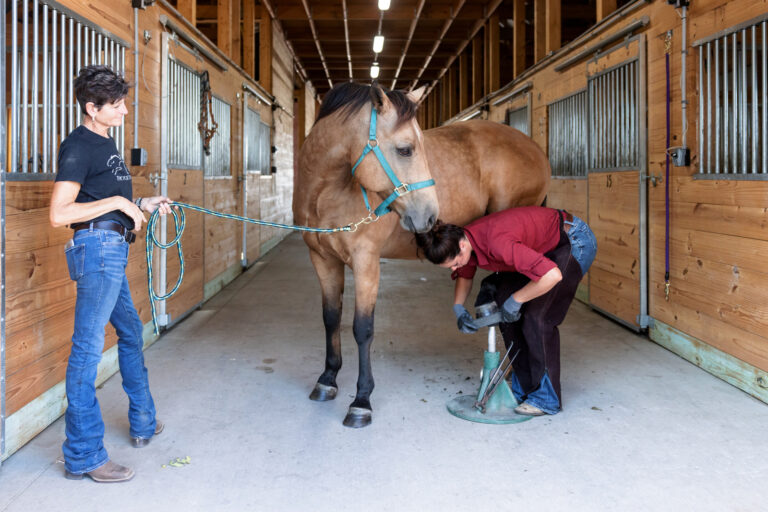This article originally appeared in the Fall 2025 issue of EquiManagement. Sign up here for a FREE subscription to EquiManagement’s quarterly digital or print magazine and any special issues.

Your practice has a unique combination of veterinary skills and experience, history, tangible assets, and people that create the foundation for your brand. To be known as one of the top practices in an area, you are wise to develop an area of expertise or serve a market segment that is needed and that you enjoy. Developing a strong practice brand is a means of ensuring your practice is recognized as unique and can’t easily be replaced.
What Is a Practice Brand?
What is the definition of a brand? It is an embodiment of what customers can expect to experience when they do business with your company. Do they expect you to arrive on time, be organized, and have all the equipment you need in your truck? Or do they expect your receptionist to be surly and impatient or frequently forget to pass messages along?
Your brand is a combination of the practice’s:
- Team accomplishments, skill set, service offerings, and customer service attributes.
- Future goals and aspirations for continual improvement.
- Communication style, behaviors, and personality.
How the equine community and your clients perceive your practice also contributes mightily.
Defining Your Practice’s Brand Identity
Who are you as a practice? Your practice’s brand identity flows first from its mission, vision, values, and culture. The expectations, perceptions, and experiences of anyone who interacts with your brand then contribute to forming your brand identity—“who you are” to them. If your clients were asked to think of your practice as if it were a person, what words would they use to describe it? Chaotic? Caring? Hurried? Harried? Compassionate? Expensive? Skilled?
Differentiation is crucial to your brand identity. If your practice is like all the rest in the market, it will be judged like a commodity—on price primarily, because otherwise it looks the same to horse owners as all the other options. If your target market discerns nothing special about your practice, it’s easy for them to pass you by for one that’s less expensive, bigger, or closer in distance. Clients will become loyal to your practice through consistent excellence in patient outcomes, customer service, and the emotional connections you make. People make decisions based primarily on how they feel, not by rational analysis. Make their experience with your practice memorable—in a good way! But remember, not everyone should be your client. Defining who you are as a practice means you must be brave enough to understand some people don’t prefer your brand. You want the clients who appreciate who you are as a practice and share your values.
Does your practice’s branding clearly showcase what differentiates your practice from others? Sometimes it isn’t what you do, but how you do it. What is consistent across everything the practice does? Is it compassion and caring? A focus on the highest possible athletic performance? Cutting-edge diagnostic equipment? Consistency in how doctors approach each case?
Final Thoughts
Clients need to trust that their experience will be consistent every single time. A practice builds credibility not through words but through actions. When a practice meets client expectations consistently, their perceptions of the practice will be increasingly positive. Think of the words you would like clients to use to describe your practice’s brand identity, and deliver that as a consistent experience every time.
Related Reading
- Business Briefs: Tips for Effective Equine Practice Marketing
- Creating a Strategic Plan for Practice Growth
- How to Build a Brand Identity for Your Equine Practice
Stay in the know! Sign up for EquiManagement’s FREE weekly newsletters to get the latest equine research, disease alerts, and vet practice updates delivered straight to your inbox.




